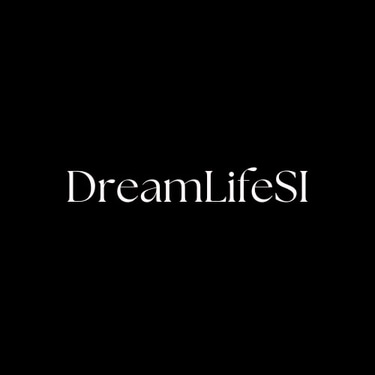The Psychology of Color: Influence on Mood & Behavior
LIFESTYLE
By Sia Imime
5/28/20253 min read


Disclosure: This article contains affiliate links, meaning that if you purchase through them, I may earn a small commission at no extra cost to you. I only recommend products that I believe will add value to your personal growth journey.
Color is more than just a visual element; it's a powerful psychological tool that influences our emotions, decisions, and well-being. From the branding strategies of billion-dollar companies to the color of your bedroom walls, color has a profound impact on how we feel, think, and behave. This article explores the science-backed psychology of color, its cultural meanings, and its practical uses in marketing, design, art, and therapy.
The Emotional Power of Color
Different colors stimulate different psychological and physiological responses. According to a 2020 study published in Frontiers in Psychology, warm colors like red and orange increase arousal and energy, while cool colors like blue and green promote calm and relaxation. These reactions occur because color influences brain activity and even triggers hormonal changes.
Red, for example, can increase heart rate and stimulate a sense of urgency, making it effective in sales and food advertising. Blue, often associated with trust and tranquility, is commonly used in tech and finance industries. Yellow can evoke happiness and optimism, stimulating serotonin production and enhancing creativity. Green symbolizes balance and nature, helping reduce anxiety and mental fatigue.
Cultural Associations of Color
Color meanings aren't universal; they vary widely across cultures. In Western cultures, white often symbolizes purity and is used in weddings, while in many Eastern cultures, white is the color of mourning. Red, commonly linked to passion and danger in the West, represents luck and joy in China. Yellow may be seen as cheerful in some cultures but signify jealousy or caution in others.
Understanding cultural color meanings is essential in global marketing and cross-cultural design. A successful color strategy must take into account these differing associations to avoid misunderstandings and enhance communication.
Color in Marketing and Branding
Color is a cornerstone of brand identity and consumer psychology. Research from the University of Loyola, Maryland, shows that color increases brand recognition by up to 80%. Brands carefully choose their color palettes to align with their values and the emotions they want to evoke.
Fast food chains often use red and yellow to stimulate appetite and urgency. Tech companies favor blue for its associations with reliability and intelligence. Green is popular in wellness and environmental brands due to its links with nature and renewal. Luxury brands frequently use black, gold, or purple to signal sophistication and exclusivity.
Interior Design and Mood
Color psychology is a foundational principle in interior design, impacting how we feel in different spaces. Bedrooms painted in calming blues or muted greens can improve sleep and reduce stress. Kitchens in warm tones like yellow or orange encourage sociability and appetite. Cool neutrals in home offices can enhance focus and reduce distractions.
Even lighting plays a role. Natural light combined with a soft color palette creates an inviting and mentally uplifting environment. Minimalist color schemes can help reduce visual noise, promoting clarity and emotional stability.
Art and Creativity
In the world of art, color is a language of its own. Artists use color to express emotion, symbolism, and narrative. Exposure to vibrant colors can stimulate imagination and emotional awareness. Studies show that red hues encourage risk-taking and dynamic thinking, while blues and greens are linked to deeper creative processing and problem-solving.
Art therapy often incorporates color to help clients express emotions that are difficult to verbalize. Abstract art that emphasizes color fields can create emotional responses that support healing and self-discovery.
Color Therapy and Healing
Color therapy, also known as chromotherapy, is an alternative healing modality that uses color and light to influence mental and physical health. Practitioners believe that different colors resonate with different parts of the body and emotional states.
Red is said to energize and stimulate circulation. Blue is used to calm the nervous system. Green promotes harmony and heart-centered healing. Violet is believed to aid in spiritual awareness and mental clarity. While not all claims are scientifically validated, light therapy has been proven effective in treating Seasonal Affective Disorder and some sleep issues.
Colorful Facts and Scientific Insights
Color isn't just aesthetic—it's functional. Correctional facilities have used pink to reduce aggression among inmates. People are more likely to make healthy choices in clean, organized, color-coordinated environments. Red cars are more frequently pulled over, not because they speed more, but because they attract more attention.
Designers now consider color-blind accessibility by using high-contrast patterns and textures, ensuring that their color choices are inclusive.
Final Thoughts: Living with Color Intentionally
Color influences our emotions, behaviors, and perceptions more than we realize. Whether you're choosing a logo, decorating a room, painting a canvas, or exploring personal healing, color is a powerful ally. Understanding its psychological and cultural implications helps you design your world—internally and externally—with greater awareness.
When used with intention, color can soothe anxiety, boost productivity, inspire creativity, and even deepen connection. So the next time you pick a color, know that you’re not just making a choice of shade—you’re shaping an experience, a feeling, and a message.
Tags: color psychology, color meaning, color in marketing, color in design, color symbolism, color in art, chromotherapy, emotional design, interior color psychology, color and emotion
